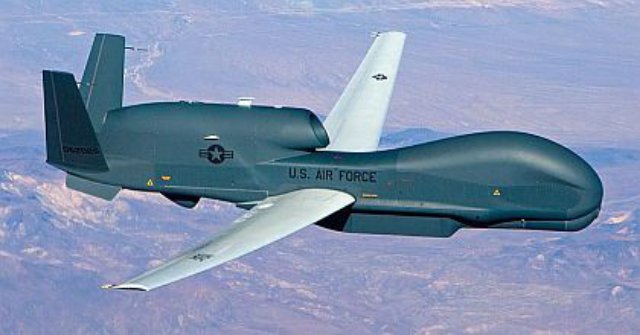 A United States Air Force Global Hawk Remotely Piloted Aircraft has for the first time flown through UK airspace as part of a NATO trial known as Unified Vision 2014. The Global Hawk aircraft flew from an Air Base in the Mediterranean and across several European countries, including the UK, to-and-from the trial area in Norway.
A United States Air Force Global Hawk Remotely Piloted Aircraft has for the first time flown through UK airspace as part of a NATO trial known as Unified Vision 2014. The Global Hawk aircraft flew from an Air Base in the Mediterranean and across several European countries, including the UK, to-and-from the trial area in Norway.
The aim of the flights was to inform the development of a NATO Alliance Ground Surveillance (AGS) system, which is expected to become operational with 5 Global hawks. The ability to route remotely piloted aircraft such as Global Hawk through European airspace being fundamental to the NATO AGS system.
The Global Hawk’s flights flew took place in controlled and segregated airspace at heights of approximately 50,000 feet+, well above the cruising altitude of commercial airliners, following well established Civil Aviation Authority measures commonly put in place for military exercises.
Although the segregated airspace was only temporarily put in place, the flights made a useful contribution to understanding how Remotely Piloted Aircraft Systems can be safely integrated within the existing aviation framework.
RAF Air Traffic controllers at the London Air Traffic Control Centre (LATCC) Swanwick, were the controlling authority for the Global Hawks while in UK Airspace. Squadron Leader Steve Brindley from LATCC (Mil) said:
“From an Air Traffic Control perspective, controlling the Global Hawk Remotely Piloted Aircraft is the same as controlling a normal manned aircraft, albeit flying at a higher level than usually encountered. There is no discernable difference in our operation with the pilot being remotely located rather than in the aircraft itself”
Air Vice Marshal Phil Osborn, Director Capability Joint Forces Command and MOD spokesman on UAS said:
“It is good to see existing airspace procedures enabling the seamless integration of Remotely Piloted Air Systems (RPAS) such as the unarmed Global Hawk aircraft within European airspace. From a UK perspective, the use of well established Civil Aviation Authority procedures, commonly put in place for military exercises, straightforwardly enabled successful trials flights using controlled and segregated airspace well above the normal operating heights of commercial airliners. This trial will have helped with the development of the NATO Alliance Ground Surveillance (AGS) system and the future airspace integration of RPAS.”
RAF/MOD Crown Copyright 2014
Source: Press Release
